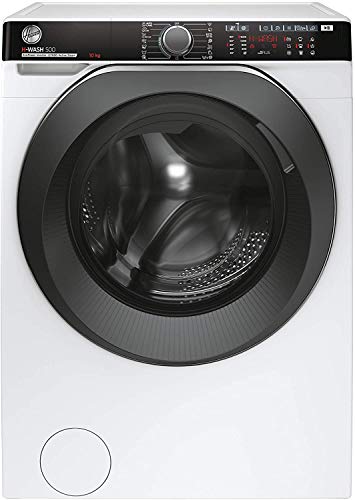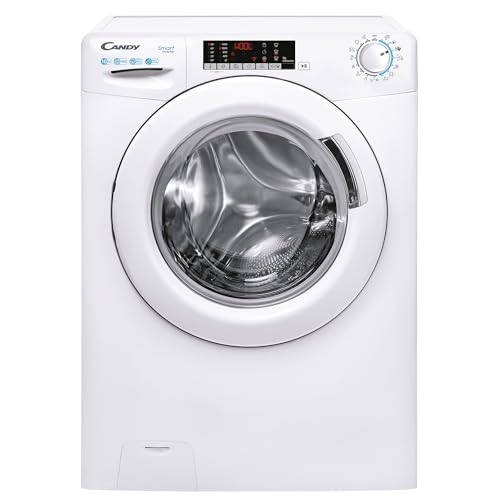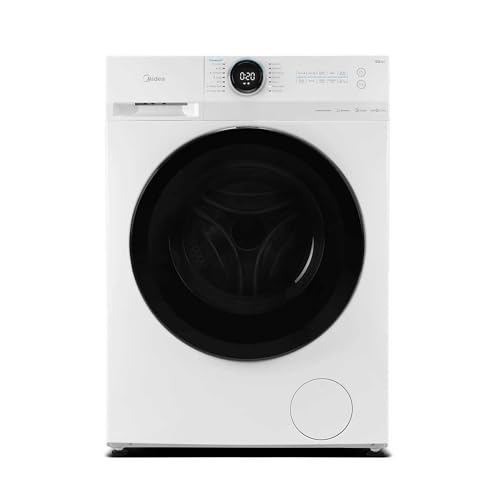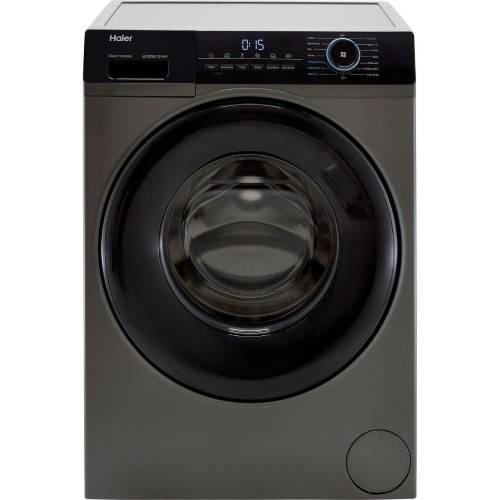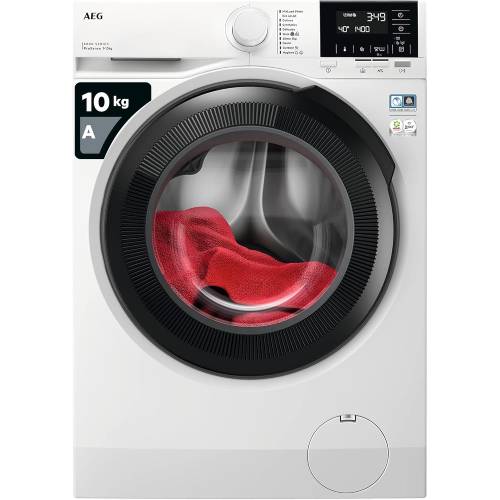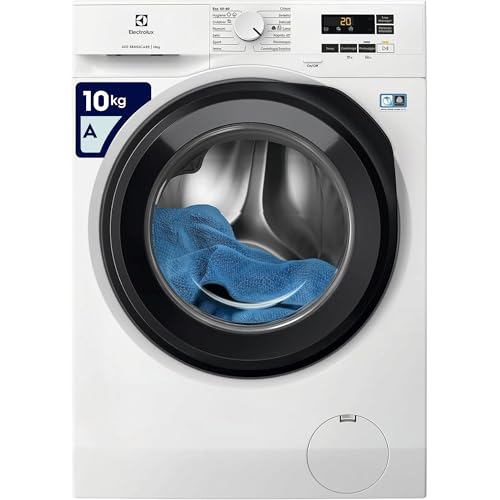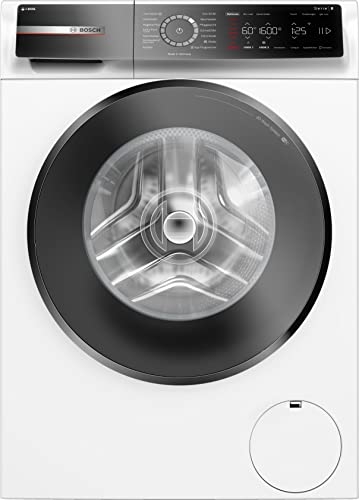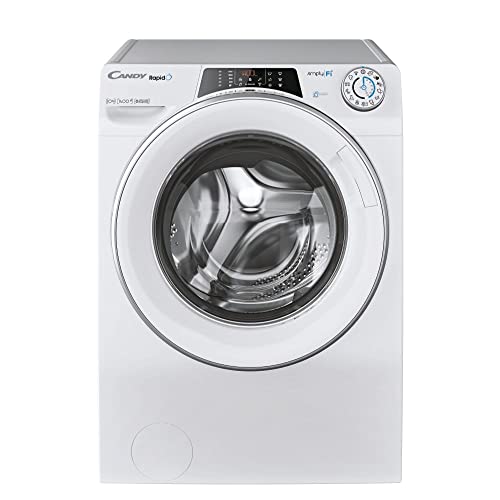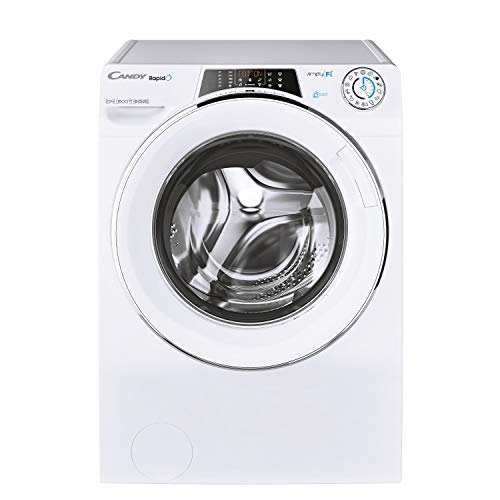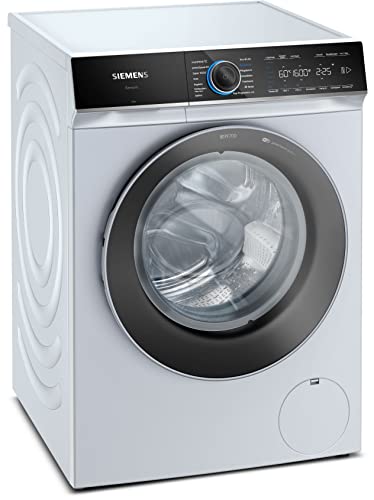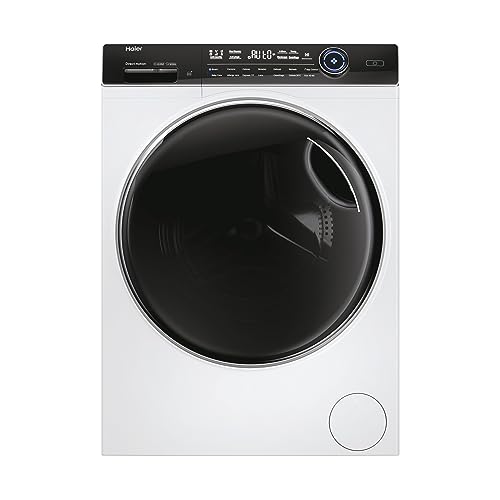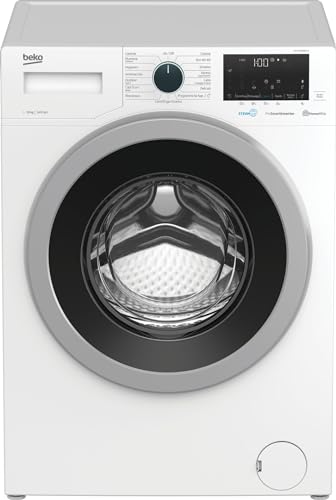How much energy do 10 kg washing machines with energy class class A consume?
A 10 kg washing machine with energy class A consumes approximately 51-52 kWh per 100 cycles. In comparison, an average washing machine on the market consumes about 55 kWh per 100 cycles, so a 10 kg machine with energy class A uses about 7% less energy than the average washing machine on the market. About 56% of all 10 kg washing machines available have energy class A.
Washing machines have energy classes ranging from A to G, with A being the best. The energy efficiency class is determined by the EEI index, calculated using the formula: EEI = (AEc/SAEc) * 100, where AEc represents the annual energy consumption of the washing machine based on real-world testing, and SAEc is the standard energy consumption calculated using EU-approved formulas.
Energy class is relative, as it depends on the washing machine's capacity. For instance, a 10 kg machine with energy class A may consume more energy than a 7 kg machine with energy class B, but it is still more efficient per kilogram of laundry.
Assuming an average of 220 washing cycles per year, a 10 kg washing machine with energy class A and an average energy consumption of 51 kWh per 100 cycles will use 103.4 kWh annually, which results in an energy bill of £30 (at a rate of 0.3 £ per kWh).
The distribution of energy consumption for 10 kg washing machines with energy class A can be seen in the following chart.
[vertical-chart-53702156077931281]
The following 10 kg washing machines with energy class A have the lowest energy consumption.
- Candy Smart Inverter CS1410TXME (Energy consumption: 51 kWh/100 cycles)
- Electrolux EW6F110G SensiCare 600 (Energy consumption: 51 kWh/100 cycles)
- Midea MF20EW100WB (Energy consumption: 51 kWh/100 cycles)
Are 10 kg washing machines with energy class A worth buying?
10 kg washing machines with energy class A are worth buying. They achieve an average overall score of 7.4 points. In comparison, the average 10 kg washing machine on the market of any other energy class scores 7.1 points. 10 kg washing machines with energy class A also receive a high user rating of about 8.1 points.
What are the main advantages of 10 kg washing machines with an energy class A?
The main advantages of 10 kg washing machines with an energy class A are as follows:
- Higher punteggio degli utenti: 10 kg washing machines with energy class A have an average user rating of 5.7 points, higher than the market average of 6 points.
- Better quality-price ratio: These washing machines score 7.1 points in quality-price ratio (market average is 7.1 points).
- Larger drum volume: They have an average drum volume of 62 liters, which is 4 liters more than the market average of 58 liters.
- Lower energy consumption: 10 kg washing machines with energy class A consume 51 kWh per 100 cycles, 4 kWh less than the market average of 55 kWh, and less than 61% of all washing machines on the market.
- Superior water extraction capability: 72% of these washing machines can reach a maximum spin speed of 1600 RPM, while 23% reach 1400 RPM.
- Many specialized washing programs: These washing machines usually include programs like pre-wash, Duvet, Jeans, Shirt, Baby Care, Hygiene, or Allergen cycles.
- Additional washing functions: Many 10 kg washing machines with energy class A include functions like anti-crease, extra fast, anti-stain, extra rinse, or rinse and hold.
- Advanced features: All of these washing machines come with an inverter motor, laundry detection system, load balancing system, foam control system, and laundry detection system.
- Advanced technologies: Many 10 kg washing machines with energy class A also feature steam technology, aqua stop system, self-diagnosis, memory function, self-cleaning, Wi-Fi, or pre-mix technology.
What are the main disadvantages of 10 kg washing machines with an energy class A?
The main disadvantages of 10 kg washing machines with an energy class A are as follows:
- Lack of top-load models: No top-load models available with 10 kg capacity and A energy class.
- Higher cost (£30 more than the market average £420 vs £390): 10 kg washing machines with energy class A generally cost about £30 more than the market average (£420 vs £390).
- Increased water consumption (49 L vs 46 L): 10 kg washing machines with energy class A consume about 3 liters more water per cycle compared to the market average (49 L vs 46 L). This increase is primarily caused by the higher capacity of the machine, as capacity directly correlates with water usage.
- Slightly louder during spin phase (76 dB vs 75 dB): 10 kg washing machines with energy class A are on average slightly louder during the spin phase than the average washing machine (76 dB vs 75 dB) but are 2 dB quieter during the wash cycle.
- Lack of advanced features: No models with 10 kg capacity and A energy class come with automatic drawer cleaning or AI technology.
How much do 10 kg washing machines with energy class A cost?
10 kg washing machines with energy class A cost between £340 and £850, with an average price of about £420. This is £30 higher than the market average of £390. They also achieve a good quality-price ratio of 7.1 points, better than the market average.
The chart below shows the price distribution of 10 kg washing machines with energy class A.
[vertical-chart-31454032082523979]
What to consider when choosing the best 10 kg washing machine with energy class A?
When choosing the best 10 kg washing machine with energy class A, focus on energy consumption and water use first. Look at the spin-drying efficiency, which impacts drying time and energy use. Noise levels matter, especially if your machine will be near living areas. Check the motor type; inverter motors last longer and run quieter. Review the washing programs and features that suit your needs, like quick wash or allergen removal. Drum volume and overall size should fit your laundry space and load requirements.
How much water do 10 kg washing machines with an energy class A rating use?
A 10 kg washing machine with an energy class A rating uses, on average, between 46 to 52 liters of water per cycle. Most models consume around 51 liters per cycle (5 liters more than the market average of 46 liters). Water consumption increases with capacity, so larger washing machines use more water. Energy class ratings do not influence water usage.
What is the spin-drying efficiency of 10 kg washing machines with energy class class A?
The spin-drying efficiency of 10 kg washing machines with energy class A falls into either class B (84% of washing machines) or class A (12%). Spin-drying efficiency class indicates how effectively the machine removes water from clothes during the spin cycle. This efficiency is highly correlated with the maximum spin speed, which ranges from 1200 to 1600 RPM in these washing machines, with 1400 RPM being the most common (72% of washing machines), followed by 1600 RPM (23%).
Higher spin speeds generally lead to more energy consumption because spinning the drum at higher speeds requires more mechanical effort. However, while higher spin speeds remove more water, they can also reduce the drying time and energy needed for drying.
If you frequently wash delicate items, pay attention to the minimum spin speed. It's necessary to use lower speeds for delicate fabrics to avoid damage. In 10 kg washing machines with energy class A, the minimum spin speed ranges from 400 to 800 RPM, with 73% of these washing machines featuring a 400 RPM minimum spin speed.
How loud are 10 kg washing machines with energy class class A
Washing machines with a 10 kg capacity and energy class A have spin noise levels ranging from 67 dB to 80 dB, with an average of 76 dB - 1 dB higher than the market average of 75 dB. Spin noise level is the loudest part of the washing process, so it's the key parameter to consider when evaluating noise. Noise emission class, which correlates with spin noise, ranges from A to C in these washing machines. Most of them fall into class C (26%, followed by class B (44%).
Washing noise levels in these washing machines range from 48 dB to 54 dB, with an average of 51 dB (2 dB lower than the market average of 53 dB).
How many washing programs do 10 kg washing machines with energy class class A have?
10 kg washing machines with energy class A have 12 to 20 washing programs. These washing machines share similar basic programs with other washing machines, regardless of energy class or capacity. Programs usually include Eco 40-60, Cotton, Synthetics, Mix, Wool, Quick Cycle, Rinse & Spin, Spin, and 20°C.
While basic programs remain consistent, specialized cycles can differ between models. Common specialized cycles in these washing machines include Pre-wash (65%), Duvet (56%), Jeans (54%), Shirt (50%), Baby Care (49%), Hygiene (75%), and Allergen (81%).
10 kg washing machines with energy class A also include various options to adjust the cycles to your needs, such as anti-crease function (69%), extra fast function (58%), anti-stain function, extra rinse function (90%), and rinse and hold function (43%).
Consider which of these functions and programs meet your needs when choosing a washing machine.
What are the common features of 10 kg washing machines with energy class class A?
10 kg washing machines with energy class A have 7 to 18 advanced features. All models include an inverter motor laundry detection system, load balancing system, foam control system, and laundry detection system. 96% of these washing machines also include steam technology only 57% of washing machines in general have this feature.
Many 10 kg washing machines with energy class A also feature an acqua stop system (74%), self-diagnosis (61%), memory function (52%), and self-cleaning feature (61%). More advanced models may have pre-mix technology (30%), Wi-Fi connectivity (35%), automatic dosing system (13%), or special drum design (30%). No 10 kg washing machine in this category has an automatic drawer cleaning feature or AI technology.
What is the drum volume of 10 kg washing machines with energy class class A?
The drum volume of 10 kg washing machines with energy class A ranges from 56 to 71 liters. The average drum volume for these washing machines is 62 liters, which is 4 liters more than the market average of 58 liters.
Depth in 8 kg washing machines with energy class A ranges from about 56 to 65 cm, so you can also find a few slim models in this category. Most models have a width of about 60 cm. You should choose a washing machine size that fits the space you have available.

